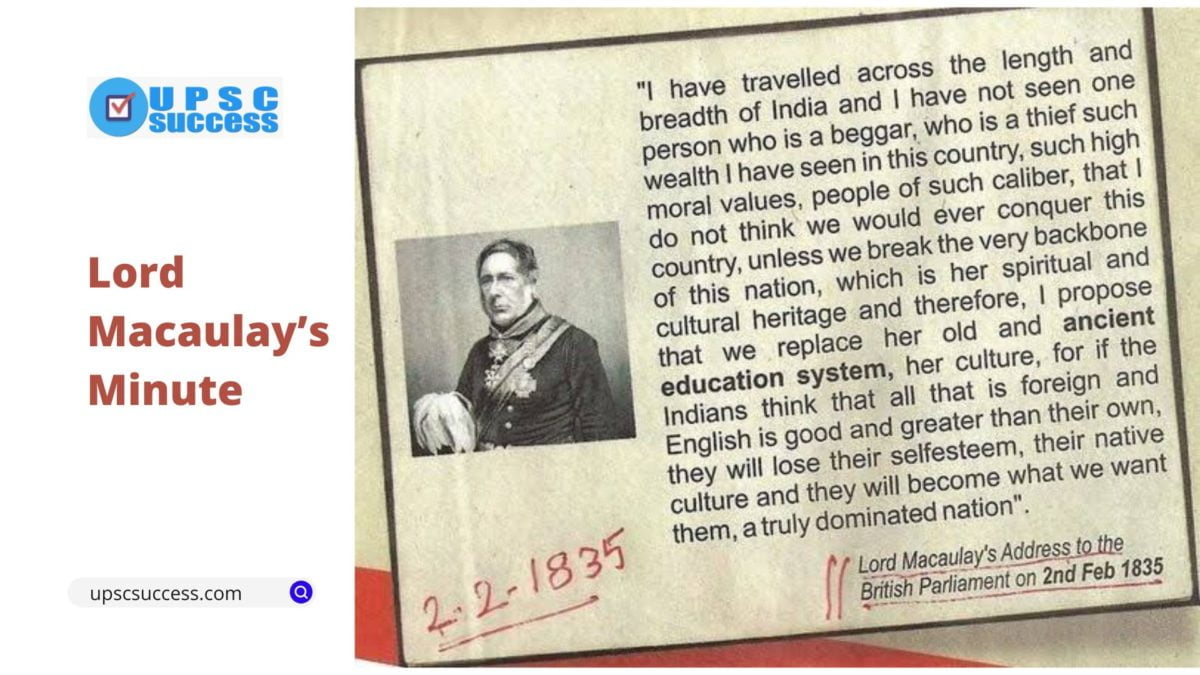On 2 February 1835, British historian and politician Thomas Babington Macaulay presented his ‘Minute on Indian Education’ that sought to establish the need to impart English education to Indian ‘natives’.
The famous Lord Macaulay’s Minute settled the row in favour of Anglicists— the limited government resources were to be devoted to the teaching of Western sciences a lone
literature through the medium of the English language alone.
Lord Macaulay held the view that “Indian learning was inferior to European learning”.
The British planned to educate a small section of upper and middle classes, thus creating a class “Indian in blood and colour but English in tastes, in opinions, in morals and in intellect” who would act as interpreters between the government and masses and would enrich the vernaculars by which knowledge of Western sciences and literature would reach the masses. This was called the ‘downward filtration theory’.
FAQs
On February 2, 1835, British historian and politician Thomas Babington Macaulay presented his ‘Minute on Indian Education,’ which sought to establish the need for Indian ‘natives’ to receive an English education.
Lord Macaulay was the father and founder of the present education system, as is referred to in the fourth line of the first paragraph.

